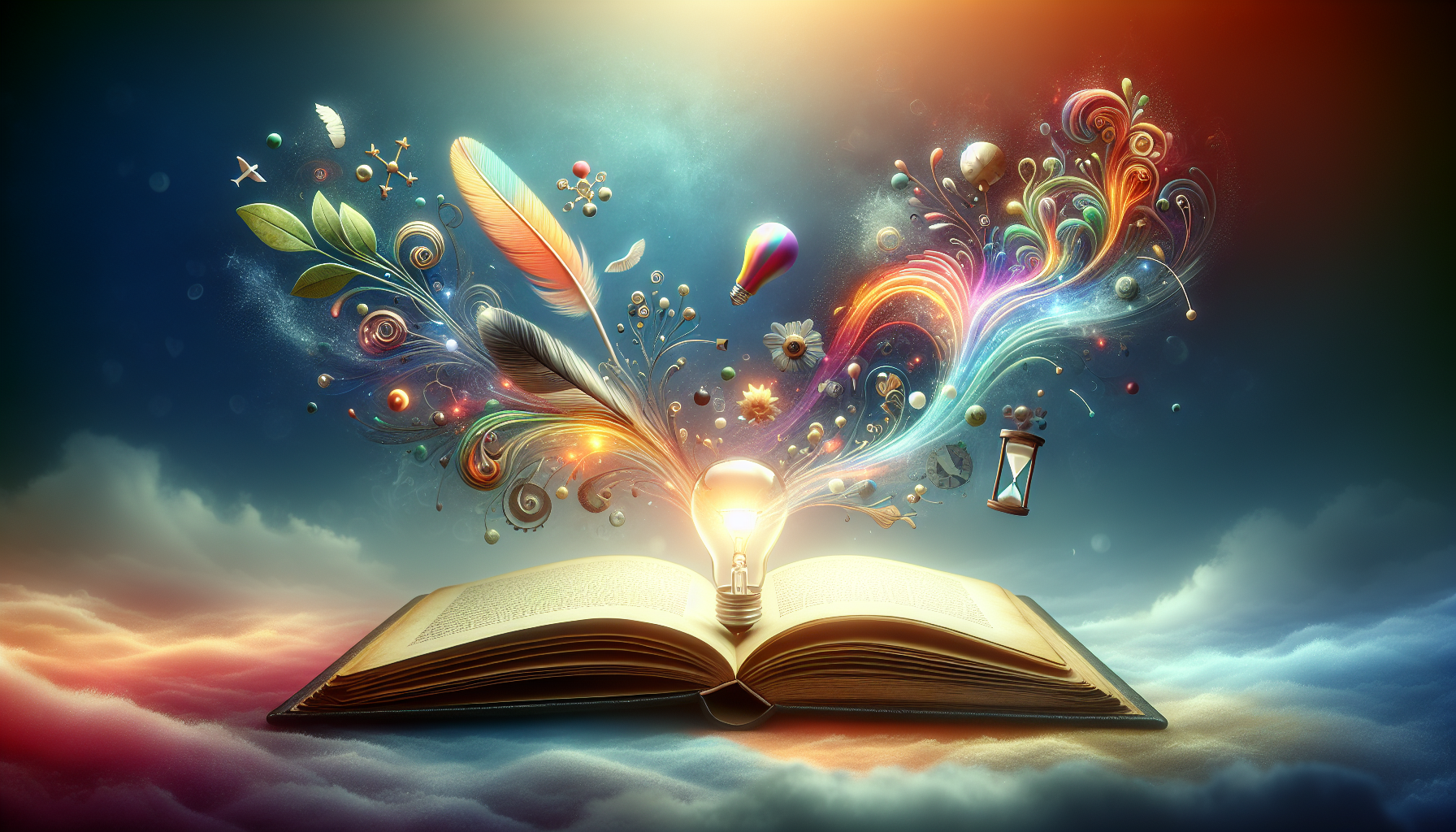Using symbolism in writing can feel like a daunting task. You might worry that your symbols won’t resonate or that they’ll come off as too cliché. Trust me, you’re not alone in feeling this way as a writer navigating the sea of literary devices.
But here’s the good news: by the end of this guide, you’ll have a solid grasp on how to weave meaningful symbols into your stories. It’s all about understanding the fundamentals and knowing how to effectively integrate them without sounding like a walking thesaurus.
We’ll explore everything from choosing the right symbols to employing them for foreshadowing and irony. So, buckle up and let’s dive into the colorful world of symbolism in writing!
Key Takeaways
Stefan’s Audio Takeaway
- Symbolism adds depth to your writing by using objects or events to represent deeper meanings.
- Select symbols that connect to your themes and evoke emotions in your readers.
- Understand different types of symbols, like personal or cultural symbols, to enrich your narrative.
- Introduce symbols early and use visual cues to reinforce their significance as the story unfolds.
- Use symbols for foreshadowing and irony to enhance plot twists and engage readers.
- Avoid overly obvious symbols; let readers interpret meanings through context.
- Repetition and vivid imagery amplify the impact of your symbols throughout the story.
- Test symbols with beta readers to ensure clarity and effectiveness.
- Experiment with different symbols to create layered meanings and keep your writing dynamic.

1. Understand What Symbolism Is in Writing
Symbolism in writing is when authors use symbols—objects, characters, or events—to represent deeper meanings or ideas.
This adds layers to the text and helps convey messages that resonate with readers on a personal level.
Interestingly, studies suggest that about 70% of readers interpret symbols based on their experiences rather than the author’s intentions.
For example, a character’s red dress might symbolize passion, danger, or even love, depending on the reader’s life experiences.
2. Choose Meaningful Symbols
The key to powerful symbolism lies in selecting symbols that hold significance to your themes.
Think about what you want your readers to feel or understand and pick symbols that align with that.
For instance, if you’re writing about freedom, you might use an open birdcage as a recurring symbol.
Just remember, the best symbols often evoke emotion and spur the imagination, making your story more engaging.
3. Learn About Different Types of Symbolism
There are various kinds of symbolism, and knowing the differences can enhance your writing.
For example, traditional symbols carry classical meanings, like the owl representing wisdom, while personal symbols could be unique to your narrative.
You may also encounter cultural symbols that hold specific meanings within certain societies, which can enrich your story even further.
Using a blend of these types can add depth to your narrative and appeal to a wider audience.

4. Integrate Symbols Into Your Story
To effectively integrate symbols into your narrative, consider their placement and context.
Start by introducing a symbol early on; this helps establish its significance and allows readers to recognize it as a recurring element.
For example, if you use a withering plant to symbolize decay, show it slowly losing its leaves throughout the story.
This gives readers a visual cue that deepens their understanding as the plot unfolds.
5. Use Symbols for Foreshadowing and Irony
Symbols can be powerful tools for foreshadowing events in your narrative.
When a character gazes at a stormy sky, it could hint at upcoming conflict or turmoil.
This subtle hinting pulls readers in and invites them to make connections between symbols and plot developments.
Irony can also emerge from symbols, creating unexpected twists that engage your audience.
For instance, a character wearing a wedding ring might symbolize commitment but can ironically represent isolation if the marriage is unhappy.
6. Avoid Overly Obvious Symbolism
Overly obvious symbolism can be a turn-off for readers, diluting the impact of your narrative.
Instead, aim for subtlety; allow readers to discover symbol meanings on their own.
For instance, instead of directly stating that a broken mirror symbolizes a shattered identity, weave it into a character’s internal dialogue or scene.
This encourages a more personal interpretation, as each reader may connect the symbol to their own experiences.
7. Enhance Symbolic Meaning with Repetition and Imagery
Repetition can amplify the power of your symbols, making them more resonant throughout your story.
By bringing symbols back at critical moments, you underscore their importance and allow readers to contemplate their meanings.
Combine this with vivid imagery to evoke emotions connected to the symbols.
For example, if you’ve chosen a storm as a symbol of chaos, paint a vivid picture of thunder, lightning, and torrential rain in scenes where tension escalates.
8. Test and Refine Your Symbols
Once you’ve integrated symbols into your story, it’s wise to test their effectiveness.
Share your work with beta readers and inquire about their interpretations.
A study shows that 70% of readers rely on personal experiences to interpret symbols, so their insights can highlight the symbol’s clarity and impact.
Use their feedback to refine your symbols, ensuring they convey what you intended without losing the reader’s engagement.
9. Experiment with Symbols to Enrich Your Writing
Don’t be afraid to experiment with different symbols and see what resonates.
Sometimes blending multiple symbols can create layered meanings that intrigue readers.
For example, a river could symbolize change while also representing a barrier for a character.
This complexity can enhance the depth of your narrative.
Feel free to revisit and revise symbols in your drafts, as new ideas often emerge during the writing process.
FAQs
Symbolism in writing refers to using symbols—objects, characters, or colors—to represent ideas, themes, or concepts beyond their literal meaning. It adds depth, allowing readers to derive nuanced interpretations and emotional resonance from the text.
To create meaningful symbols, consider your story’s themes and characters. Choose objects or motifs that resonate with the emotional experiences or conflicts of your characters, enhancing the narrative and enabling deeper reader engagement.
Different types of symbolism in literature include conventional symbols (widely recognized meanings), personal symbols (unique to the author), and archetypal symbols (common themes across cultures). Each type enhances storytelling by adding layers of meaning.
Integrate symbols by introducing them subtly throughout the narrative, linking them to character development or key events. Ensure they are relevant and enhance the story’s themes, allowing readers to discover their significance organically.
